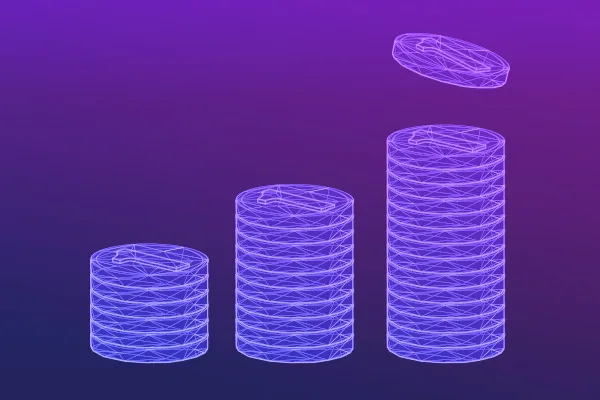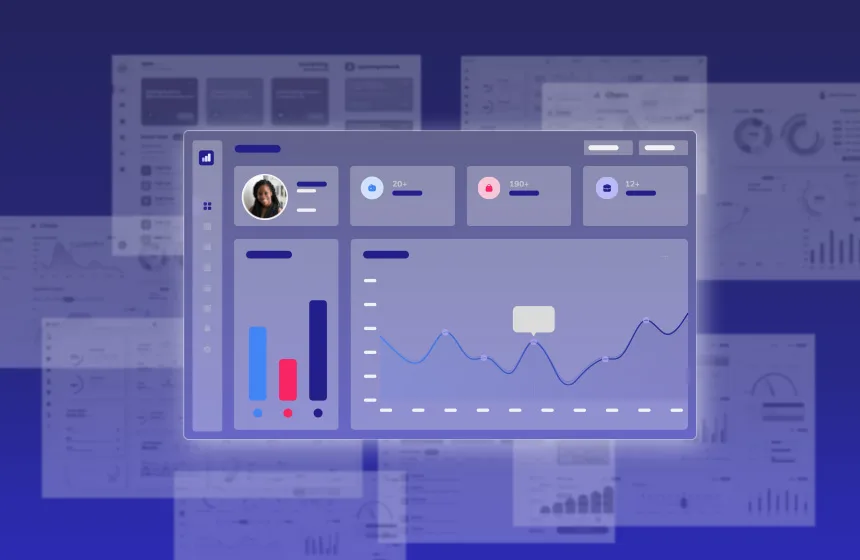Accelerate deals and increase win rates with the leading enterprise demo platform.
The Outsized Impact of SEs on Customer Acquisition Costs (CAC)

April 3, 2025
Table of Contents
Sales and Marketing usually get the most attention when it comes to lowering Customer Acquisition Costs (CAC), but there’s another team that plays a big role: Solutions Engineering.
Presales teams shape pipeline outcomes, influence deal velocity, and impact revenue retention. Yet, too often, their impact is measured only by their execution of individual tasks rather than their strategic contribution to company-wide goals. In other words, they’re stuck in a “single-threaded influence trap.”
Solutions teams have the ability to reduce CAC not just through efficiency, but through increasing their own influence. They can influence lead qualification. Improve sales conversion rates. Drive expansions. Refine ideal customer profiles (ICPs) to help marketing.
The question is: How do you expand this influence and translate presales impact into measurable cost savings?
Let’s take a look at how SE leadership can influence CAC.
How Presales Contributes to CAC
Many factors contribute to the cost of acquiring a new customer — ranging from top-of-funnel ad spending, to the organization of your sales processes. SE teams have direct influence over more of those factors than you might think.
1. Time and Labor Costs
Presales professionals are highly skilled and in high demand. Their salaries are a big part of CAC, especially if they’re spending time on prospects that never close. Every demo, discovery call, and technical deep dive takes time…and time is money.
Beyond salaries, there’s a significant opportunity cost to inefficiencies in presales. According to the 2025 Presales Landscape Report, nearly a quarter (23%) of SEs report that more than half of their weekly demos are delivered to unqualified prospects, while 40% of SEs said it’s a quarter of their weekly demos. If SEs spend time on unqualified prospects, they’re not supporting deals that have a higher probability of closing.
In some cases, sales teams over-rely on presales for early-stage conversations that AEs could handle independently if they had a standardized demo program. Without clear qualification criteria and structured engagement models, presales teams risk becoming a bottleneck, driving up acquisition costs unnecessarily.
2. Customization and Technical Effort
Not every prospect is the same, which means SEs often create custom demos or build proof of concepts (POCs) tailored to each company’s needs. This level of personalization can make or break a deal, but it also increases costs, especially when done at scale.
While tailored demos can be compelling, they require extensive time, from gathering customer-specific data to configuring unique integrations. Similarly, if every prospect expects a custom POC before committing, presales teams can quickly become overextended, leading to long turnaround times and higher costs per opportunity.
This trend won’t change — sales teams will prefer to err on the side of over- rather than under-preparing opportunities. As a reaction, SE teams must look for ways to scalably personalize their demos.
3. Lengthening the Sales Cycle
If every prospect requires multiple meetings, technical assessments, and hands-on trials, the sales cycle drags out, increasing the overall cost to acquire the customer. Long sales cycles are expensive because they require ongoing attention from multiple teams, including presales, sales, marketing, and customer success in some cases. The longer a deal remains open, the more hours accumulate, raising CAC.
A common reason for drawn-out sales cycles is unclear qualification, where presales invests time in prospects who are still evaluating options rather than actively looking to buy. Additionally, complex approval processes within the prospect’s organization (e.g., security reviews, legal checks, stakeholder buy-in) can slow things down further.
SEs have an opportunity here. By equipping GTM teams to show the product earlier in the sales cycle, SEs can accelerate the entire process. If all sales has to show is slides, the deal drags on. And if SEs have to join every call where the product is shown, that gets expensive.
How SEs Can Reduce CAC
If presales resources are stretched too thin — engaging with unqualified prospects or building custom demos for every deal — CAC can skyrocket. But when solutions teams operate strategically, they can actively reduce acquisition costs by improving qualification, scaling technical engagement, and speeding up deal cycles.
Here’s how presales teams can move from a cost center to a revenue accelerator.
1. Prioritize the Right Opportunities to Reduce Wasted Effort
One of the biggest cost drivers in customer acquisition is inefficient resource allocation. Presales teams often get pulled into lots of deals, regardless of their quality, leading to wasted time on prospects who were never a fit.
How Presales Can Reduce CAC:
- Refine the lead qualification processes: Establish mutual qualification checkpoints with sales to ensure SEs only engage with well-vetted leads. This prevents unqualified prospects from consuming valuable SE time.
- Conduct lost deal analysis: Identify patterns in technical or process gaps that contributed to lost deals. Use these insights to refine presales engagement strategies and help sales focus on winnable deals.
- Train SDRs on technical qualification: SEs can support SDR teams by providing targeted qualification and discovery questions, as well as messaging guidance to ensure that early conversations filter out poor-fit prospects before they reach the presales stage.
2. Scale SE Resources with Reusable Demo and PoC Assets
Every custom demo or POC adds cost to customer acquisition. CAC explodes when these are built from scratch for every prospect. Presales teams need scalable alternatives that maintain a high-quality experience for prospects while reducing manual effort.
How Presales Can Reduce CAC:
- Build a structured demo program: Implement a demo creation strategy that allows sales teams to self-serve with customizable demo templates and AI-powered synthetic data injection. Well-executed demo programs can free SEs up to focus on strategic conversations later in the sales cycle.
- Develop modular POCs: Instead of creating fully custom POCs for each deal, use pre-configured, industry-specific environments that require minimal customization. These environments can allow presales teams to support more deals without increasing costs.
3. Shorten Sales Cycles by Showing Product Early
Long sales cycles increase CAC because they require ongoing presales, sales, and marketing effort. That means SEs often get pulled into unnecessary meetings, drawn-out POCs, or repetitive technical discussions that delay deal closure.
How Presales Can Reduce CAC:
- Establish POC criteria: Require prospects to define clear success criteria before agreeing to a PoC. This prevents excessive scope creep and ensures presales investment is aligned with real buying intent.
- Limit custom demos to later-stage prospects: Encourage early-stage buyers to engage with interactive product tours before engaging in a live demo with sales. In fact, product tours are a top-performing CTA, since many prospects prefer to do their own research prior to speaking with sales.
- Use automation to speed up technical validation: AI-driven questionnaire responses, templated RFPs, and self-contained demo environments can eliminate time-consuming manual work.
- Enable sales to show the product earlier — and by themselves: Instead of looping in SEs for every demo, sales should be empowered to show product themselves. SEs can help by building a repeatable demo environment. This can be either an on-rails experience for more junior reps, or a “sandbox” style environment where reps can go anywhere in the product. Depending on your app, SEs can even configure a live environment with custom data for reps to demo.
4. Drive Expansion Revenue to Offset Acquisition Costs
Beyond new business, SEs play a key role in upsells, renewals, and expansion opportunities. By proactively engaging existing customers and identifying new use cases, presales can help grow revenue without increasing acquisition costs.
How Presales Can Reduce CAC:
- Establish a “trusted advisor” approach: Instead of only engaging during the initial sale, SEs should maintain relationships with customers, guiding them toward new product adoption opportunities.
- Partner with customer success teams: Conduct quarterly technical review sessions with existing customers to uncover expansion and upsell potential.
- Run targeted enablement sessions: Host customer education workshops showcasing new features and advanced use cases that encourage customers to increase their adoption.
5. Align Presales Influence to Board-Level Metrics
One of the biggest reasons solution teams’ impact on CAC isn’t recognized is because SE work is often seen as supporting rather than revenue-driving. To shift this perception, presales teams need to tie their work directly to measurable business outcomes.
How Presales Can Reduce CAC:
- Track demo-to-close conversion rates: Measure how solutions-led demos influence pipeline conversion, proving the role’s direct impact on revenue.
- Integrate presales into revenue discussions: Involve presales teams in forecasting meetings, SKOs, QBRs, and board-level revenue discussions to highlight their role in reducing CAC.
- Use data-driven insights to refine ICPs: Use presales feedback from lost deals and technical objections to refine ICPs, ensuring marketing and sales are targeting the right prospects.
“In my experience, having a CAC (customer acquisition cost) metric that focuses on the presales team (i.e., salary to recurring revenue or lifetime value of customer) or a ‘Net Incremental Lift’ metric (% difference in ASP for deals with/without a presales professional) is better understood by the CFO and drives headcount more than time-based metrics,” – Chris Pliakas, PreSales Collective Member and Principal, Portfolio Operations at PSG
Reinventing Solutions Engineering as a Strategic Revenue Driver
When positioned strategically, SEs can become one of the most effective levers for reducing CAC and improving overall revenue efficiency.
The winning revenue teams will be those that treat presales as a strategic asset, not just an operational function. The path to lower CAC doesn’t mean doing less — it means doing the right things more efficiently and ensuring SEs are contributing where it matters most.
Want even more insights on expanding solutions consulting’s influence on revenue? Get the eBook






